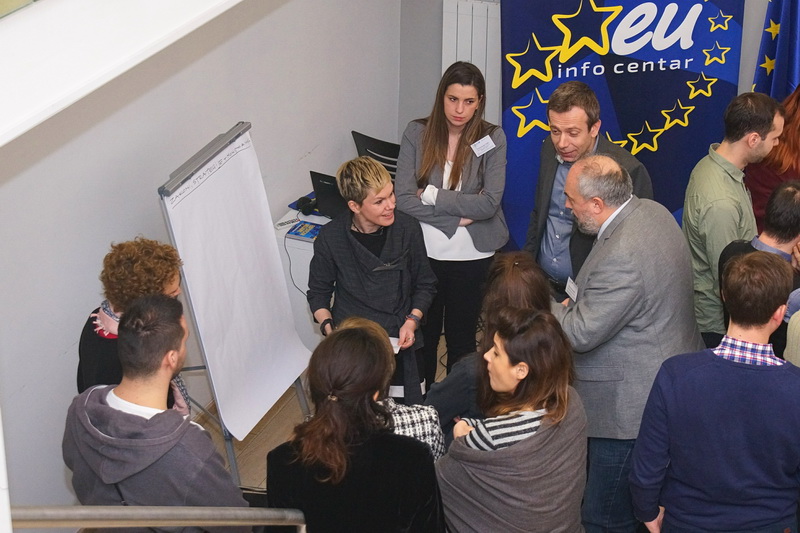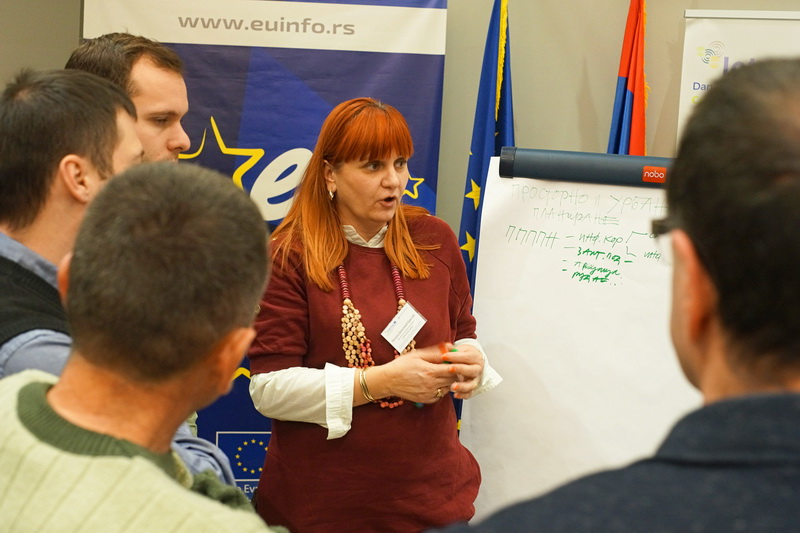ConnectGREEN - Identification of ecological corridors, a subject of big interest for the stakeholders in Serbia
08-02-2019
Valuable knowledge and experience were exchanged by the participants at the first national workshop in Serbia under the project ConnectGREEN dedicated to the review of Draft Carpathian methodology for identifying key areas and ecological corridors used by large mammals (carnivores). The meeting was held in Belgrade, on 1st February 2019.

© Marijana Pantić/IAUS
As an IPA 1 project partner participating in the project ConnectGREEN ((DTP 072–2.3) – Restoring and managing ecological corridors in mountains as the green infrastructure in the Danube Basin), the Institute of Architecture and Urban & Spatial Planning of Serbia (IAUS) organized the first of several planned national workshops for determining framework Carpathian methodology for the identification of key areas and ecological corridors of great carnivores, as well as for establishing the Carpathian Countries Integrated Biodiversity Information System.
The objective of the workshop was to contribute to the development of specific measures for migratory corridors management and revitalization through participation of key stakeholders (institutions involved in nature protection, spatial planning, infrastructural planning and design, management of protected areas, hunting, forestry, local communities, etc.). The knowledge and experience shared between the actively involved stakeholders enabled better identification of all the relevant sectors’ needs in defining the said methodology.
A workshop with an important participation
Thirty-six representatives of the relevant stakeholders in Serbia, including the representatives of: four ministries of the Republic of Serbia (Ministry of Environmental Protection; Ministry of Agriculture, Forestry and Water Management; Ministry of Construction, Transport and Infrastructure; and Ministry for European Integration); public companies, regional and provincial institutes and agencies (Institute for Nature Conservation of Serbia, Institute for Nature Conservation of Vojvodina Province, Serbian Environmental Protection Agency, State Enterprise "Srbijašume", State Enterprise "Vojvodinašume", Public Enterprise "Roads of Serbia", JSC Serbian Railways, Corridors of Serbia, Urban and Spatial Planning Institute of Vojvodina, “Plovput” – Directorate for Inland Waterways); PE “Đerdap National Park”; institutes (Institute of Transportation CIP, Highway Institute JSC Belgrade); Belgrade university professors (Faculty of Forestry and Faculty of Biology); and other interest groups (WWF Serbia, Natural History Museum in Belgrade), took part in the workshop.
Workshop participants were warmly greeted by Olivera Radoičić, expert advisor in the Ministry of Construction, Transport and Infrastructure, and Dušan Ognjanović from the Ministry of Environmental Protection, Protected Areas Department. After dr Marina Nenković-Riznić, the Project Manager in IAUS, introduced the ConnectGREEN project to the participants, prof. dr Marija Maksin presented the Draft methodology for identification of migratory corridors of large mammals in the Carpathian region, followed by the exposition of Ms Klara Sabadoš, representing the Institute for Nature Conservation of Vojvodina Province, on experiences in and suggestions for identifying ecological corridors in Vojvodina. After discussion on the basic elements and terms of the proposed methodology, which ended the introductory part of the workshop, it was continued by round table discussions with stakeholders on the proposed Draft methodology.
Dr Marina Nenković Riznić, as a project coordinator from the IAUS, emphasized an importance of implementation of the Carpathian methodology in Serbia, having in mind that this type of methodology was not previously introduced to the current practice. There are similar methodologies on the national level, but it would be more adequate if the methodologies for identification of migration corridors of large carnivores are unified for the whole territory of the Carpathians. This project will also make a direct, and above all necessary connection between nature protection and spatial and infrastructure planning and design, which was rather noticeable on the 1st NWS.

© Marijana Pantić/IAUS
The methodology established under this project will be used for identification of ecological corridors in four transnationally relevant areas, namely: 1. National Park Piatra Craiului /National Park Bucegi (Romania), 2. The Apuseni Mountains / South-Western Carpathian Mountains (Romania) / National Park Đerdap (Serbia), 3. Western Carpathian Mountains (the Czech Republic – Slovakia), and 4. National Park Bükk (Hungary) / Protected Landscape Area Cerová vrchovina (Slovakia). Physical obstacles and other threats will be identified on the said locations, and together with other categories of spatial data, integrated into the Carpathian Countries Integrated Biodiversity Information System (CCIBIS).
